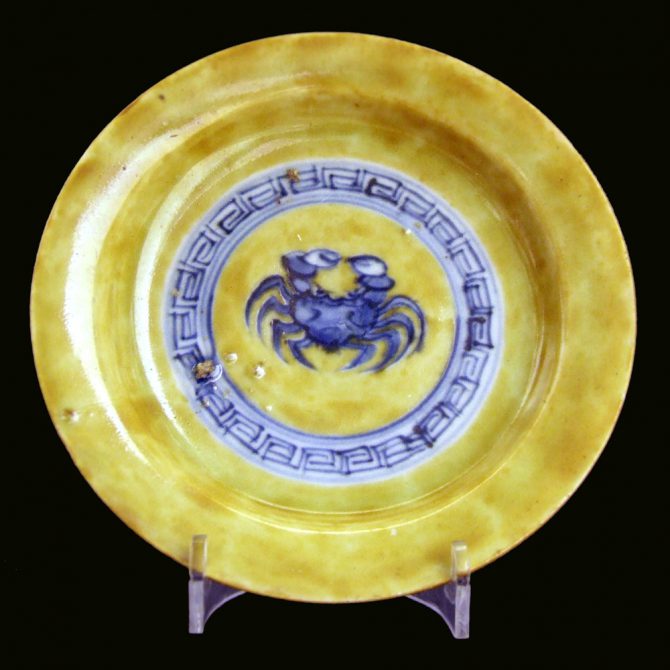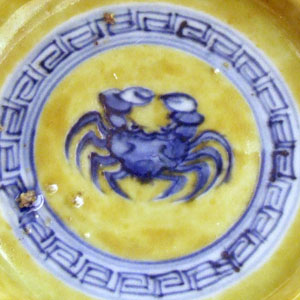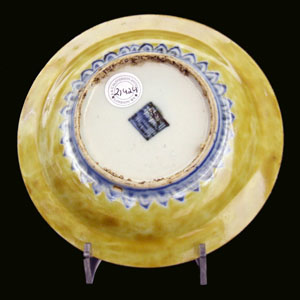
LATE JIAJING to WANLI c.1560 – 1580. Ming Porcelain
A Very Rare 16th Century Ming Porcelain Mottled Yellow-Green Ground Blue and White Dish, Late Jiajing to Early Wanli c.1560-80. Decorated with a Crab to the Center, Surrounded by a Key Fret Border. The Base with a Mark Within a Lozenge Panel, Possibly Fu Gui Jia Qi, ‘Beautiful Vessel for the Rich and Vessel for the Rich and Honourable’.
SOLD
- Condition
- Perfect, some kiln grit to the glaze on the front.
- Size
- Diameter : 14 cm (5 1/2 inches)
- Provenance
- N/A
- Stock number
- 21424
- References
- For a Ming Porcelain dish of this pattern dated to c.1560, with an incised border but lacking the yellow enamel see : The Fort San Sebastian Wreck, A 16th century Portuguese Porcelain Wreck Off the Island of Mozambique, Christie's, 18th May 2004, lots 614 and 615. For another Ming Porcelain dish of this pattern, also without the yellow ground but with later jewelled decoration see : Chinese Ceramics in the Topkapi Saray Museum Istanbul, A Complete Catalogue II, Yuan and Ming Porcelains (Regina Krahl, Sotheby's 1986) page 845 item 1751. For a Ming Porcelain dish of this pattern dated to c.1560, with an incised border but lacking the yellow enamel see : The Fort San Sebastian Wreck, A 16th century Portuguese Porcelain Wreck Off the Island of Mozambique, Christie's, 18th May 2004, lots 614 and 615. For another Ming Porcelain dish of this pattern, also without the yellow ground but with later jewelled decoration see : Chinese Ceramics in the Topkapi Saray Museum Istanbul, A Complete Catalogue II, Yuan and Ming Porcelains (Regina Krahl, Sotheby's 1986) page 845 item 1751. For a Ming Porcelain dish of this pattern dated to c.1560, with an incised border but lacking the yellow enamel see : The Fort San Sebastian Wreck, A 16th century Portuguese Porcelain Wreck Off the Island of Mozambique, Christie's, 18th May 2004, lots 614 and 615. For another Ming Porcelain dish of this pattern, also without the yellow ground but with later jewelled decoration see : Chinese Ceramics in the Topkapi Saray Museum Istanbul, A Complete Catalogue II, Yuan and Ming Porcelains (Regina Krahl, Sotheby's 1986) page 845 item 1751.
Information
This piece has a yellow ground but not an imperial yellow, due to its green hue and uneven application. The imperial yellow colour was reserved for imperial pieces, the penalties for anyone using it for none imperial porcelain were dire. A number of new ground colours were used in the second half of the 16th century, for example the dry red used for 'Kinrande'. The uneven yellow of the present example is very rare. This Ming dish was purchased in Japan and was probably made for that market.

